ARCHIVE FOR THE ‘data-management’ CATEGORY
Feb 11, 2022 • Features • White Paper • Digital Transformation • Data Management • customer experience • CareAR
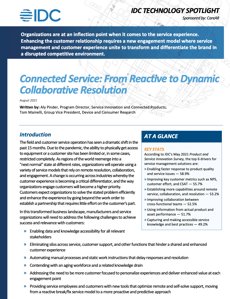
This feature is just one short excerpt from a recent white paper published by CareAR.
www.fieldservicenews.com subscribers can read the full white paper now by hitting the button below.
If you are yet to subscribe you can do so for free by hitting the button and registering for our complimentary subscription tier FSN Standard on a dedicated page that provides you instant access to this white paper PLUS you will also be able to access our monthly selection of premium resources as soo as you are registered.

Data usage note: By accessing this content you consent to the contact details submitted when you registered as a subscriber to fieldservicenews.com to be shared with the listed sponsor of this premium content CareAR who may contact you for legitimate business reasons to discuss the content of this white paper, as per the terms and conditions of your subscription agreement which you opted into in line with GDPR regulations and is an ongoing condition of subscription.
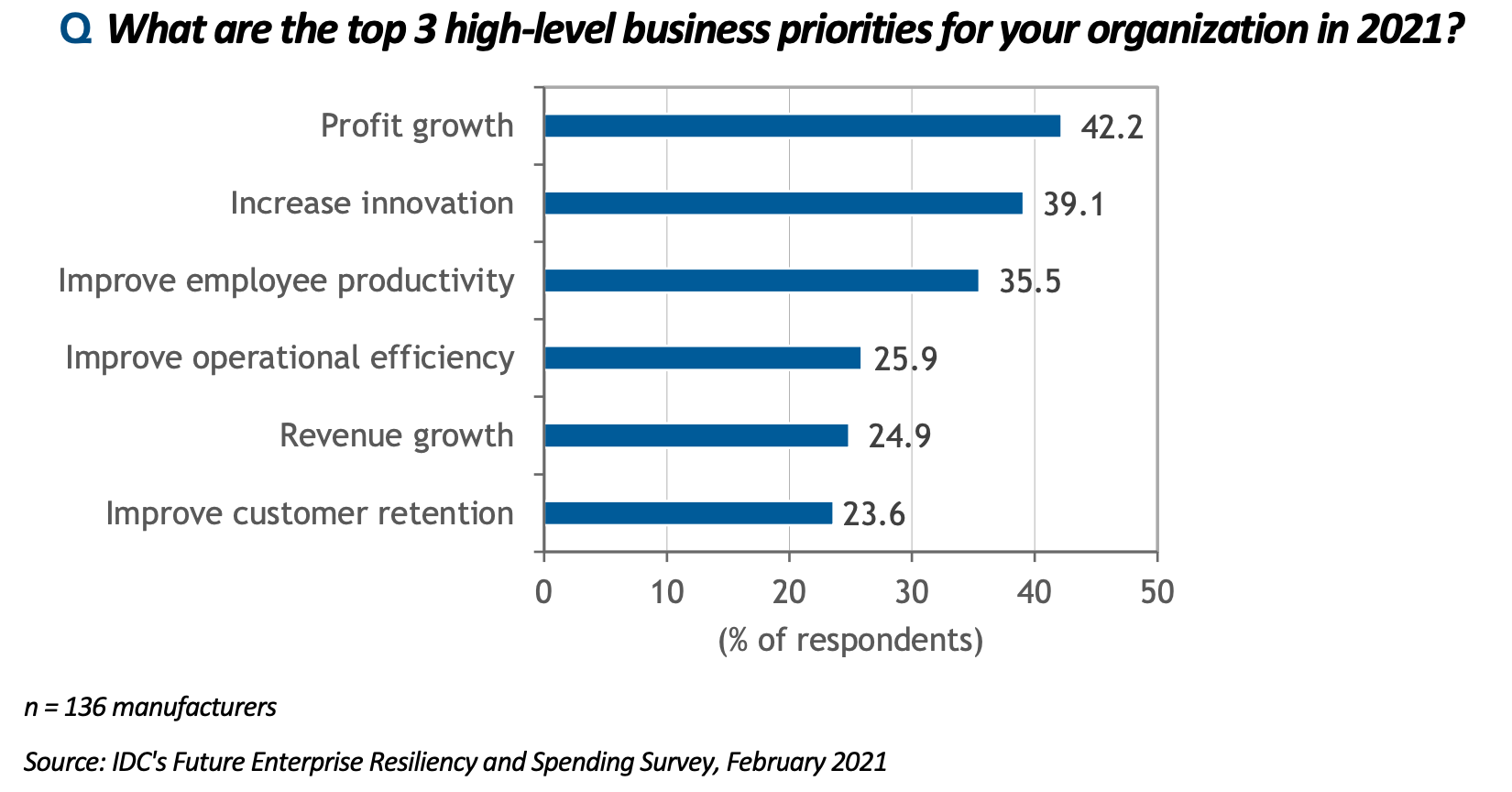
As manufacturers and service organizations shift their business and customer engagement models, they must address a few areas to truly bring together the service experience and the customer experience:
-
Establish the knowledge capabilities to address reactive, proactive, and self-service needs. No one model will be in place in all situations, and organizations will need to be nimble to adjust to the need efficiently.
-
Deliver support and resolution for both simple and complex work with a diverse workforce with various degrees of expertise. Customers want a resolution to ensure that their operation or experience is not negatively impacted by downtime. To provide this level of service, organizations need to solve problems of varying complexity. What has changed is this level of response needs to happen on the first visit because extended downtime due to a lack of expertise to solve a problem is unacceptable.
-
Harness the convergence of the customer experience with the service and support experiences, strengthening the partnership with customers. Data must flow across the organization, and manufacturers are beginning to understand they need to make data accessible across functional teams to offer an integrated customer experience. Customer centricity has shifted the focus of manufacturers to prioritize the needs of the customer and the service employee, providing them with the visibility to go beyond standard engagements to deliver "wow" experiences. Meeting service-level agreements (SLAs) is table stakes; organizations need to go beyond the standard contract to connect the service experience with other activities such as sales, marketing, and product improvements.
-
Leverage innovative technologies such as augmented reality (AR) to drive innovation and an enhanced customer experience. The pandemic helped drive a rapid shift where AR moved from being a cool future technology to a technology that's delivering tangible value around remote service, remote collaboration between a service worker and a customer, and self-service experiences with technical support. Nearly three-fourths (72.2%) of manufacturers in IDC's May 2021 Product and Service Innovation Survey pointed to AR as important or very important to their current efforts around service innovation.
AR technology has evolved dramatically over the past few years. The pandemic drove a big part of that evolution, as companies adapted to an ever-evolving set of circumstances on the ground. In a 2021 survey of AR adopters, IDC found that the top 3 benefits the technology brought to their businesses were increased worker efficiency, improved real-time collaboration, and improved knowledge transfer between expert and novice workers.
Another driving force behind the current uptick in AR adoption is that an increasing number of companies are finding ways to integrate AR capabilities into their existing workflows and back-end systems. Any organization looking at new technologies to become more dynamic and less reactive must consider the impact on its current processes to leverage existing systems and partners to drive improvements without creating disruption.
Field Service News subscribers can access the full white paper sponsored by CareAR and written by Ali Pinder, Program Director, Service Innovation and Connected Products at IDC, and Tom Mainelli, IDC's Group Vice President, Device and Consumer Research, by clicking on the button below.
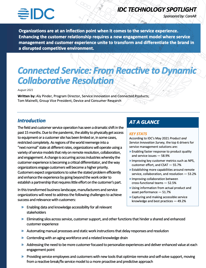
This feature is just one short excerpt from a recent white paper we published in partnership with Exel Computer Systems..
www.fieldservicenews.com subscribers can read the full white paper now by hitting the button below.
If you are yet to subscribe you can do so for free by hitting the button and registering for our complimentary subscription tier FSN Standard on a dedicated page that provides you instant access to this white paper PLUS you will also be able to access our monthly selection of premium resources as soo as you are registered.
 Data usage note: By accessing this content you consent to the contact details submitted when you registered as a subscriber to fieldservicenews.com to be shared with the listed sponsor of this premium content CareAR who may contact you for legitimate business reasons to discuss the content of this white paper, as per the terms and conditions of your subscription agreement which you opted into in line with GDPR regulations and is an ongoing condition of subscription.
Data usage note: By accessing this content you consent to the contact details submitted when you registered as a subscriber to fieldservicenews.com to be shared with the listed sponsor of this premium content CareAR who may contact you for legitimate business reasons to discuss the content of this white paper, as per the terms and conditions of your subscription agreement which you opted into in line with GDPR regulations and is an ongoing condition of subscription.
Further Reading:
- Read more about Digital Transformation @ www.fieldservicenews.com/digital-transformation
- Read more about Customer Experience @ www.fieldservicenews.com/customer+experience
- Learn more about CareAR @ carear.com
- Follow CareAR on Twitter @ twitter.com/carear_com
- Connect with CareAR on LinkedIn @ www.linkedin.com/carear/
Feb 04, 2022 • Features • White Paper • Digital Transformation • Data Management • customer experience • CareAR

This feature is just one short excerpt from a recent white paper published by CareAR.
www.fieldservicenews.com subscribers can read the full white paper now by hitting the button below.
If you are yet to subscribe you can do so for free by hitting the button and registering for our complimentary subscription tier FSN Standard on a dedicated page that provides you instant access to this white paper PLUS you will also be able to access our monthly selection of premium resources as soo as you are registered.

Data usage note: By accessing this content you consent to the contact details submitted when you registered as a subscriber to fieldservicenews.com to be shared with the listed sponsor of this premium content CareAR who may contact you for legitimate business reasons to discuss the content of this white paper, as per the terms and conditions of your subscription agreement which you opted into in line with GDPR regulations and is an ongoing condition of subscription.
Manufacturers and service organizations need to manage various priorities to ensure they can survive, thrive, and excel in a competitive environment where customer expectations continue to rise.

BENEFITS
Service management with field technicians — and directly with customers — has long been held back by a reactive break/fix model. In this model, customers have to notify the service organization of a failure or a break. The field service team then must attempt to solve the issue with limited information gleaned from the customer or historical data from the last service visit. This process typically involves dispatching a service technician or engineer to a customer site to validate a diagnosis, often leading to a secondary or tertiary service call. Real-time visibility into the product or asset with detailed collaborative capabilities can transform the service and customer experience.
The shift from reactive service models to proactive service experiences has an impact that transcends operational efficiency to enhance the customer relationship. Establishing an operating model where the customer and the service employee are at the heart of the service experience is transformative and can be a true industry differentiator. This framework establishes a new partnership of shared goals, outcomes, and experiences that optimize service and deliver new value.
Connected service insights are part of the innovative future for manufacturers and service organizations. A few of the most impactful benefits derived from this approach are:
- Having the right content and insights at the point of need, which speeds up service resolution and avoids the need to sift through irrelevant manuals and work instructions with reactive and proactive service interactions
-
Capturing and then sharing institutional knowledge, which minimizes the impact of an aging or retiring field and service workforce
-
Improving increased first-time fix and lower mean-time-to-resolution metrics, which enhances the customer experience through proactive support
-
Avoiding unnecessary truck rolls that impact fuel usage, emissions, and safety, which helps improve operations
-
Establishing an emotional and personalized bond between the service team and the customer through contextual awareness of the problem at hand, integration of a full view of the customer, and self-service experiences
TRENDS
Manufacturers and service organizations are racing to digitally transform their business operations to deliver a new experience to customers, enhancing both the brand and the engagement model. Competition has forced manufacturers and service organizations to rethink how they strengthen bonds with customers, which wasn't historically necessary as they owned the customer life cycle. In IDC's November 2020 COVID-19 Impact on IT Spending Survey, nearly half of manufacturers said they prioritize creating new digital products and services and now look to deliver digital-first customer experiences — 46.2% and 31.9%, respectively
Field Service News subscribers can access the full white paper sponsored by CareAR and written by Ali Pinder, Program Director, Service Innovation and Connected Products at IDC, and Tom Mainelli, IDC's Group Vice President, Device and Consumer Research, by clicking on the button below.

This feature is just one short excerpt from a recent white paper we published in partnership with Exel Computer Systems..
www.fieldservicenews.com subscribers can read the full white paper now by hitting the button below.
If you are yet to subscribe you can do so for free by hitting the button and registering for our complimentary subscription tier FSN Standard on a dedicated page that provides you instant access to this white paper PLUS you will also be able to access our monthly selection of premium resources as soo as you are registered.
 Data usage note: By accessing this content you consent to the contact details submitted when you registered as a subscriber to fieldservicenews.com to be shared with the listed sponsor of this premium content CareAR who may contact you for legitimate business reasons to discuss the content of this white paper, as per the terms and conditions of your subscription agreement which you opted into in line with GDPR regulations and is an ongoing condition of subscription.
Data usage note: By accessing this content you consent to the contact details submitted when you registered as a subscriber to fieldservicenews.com to be shared with the listed sponsor of this premium content CareAR who may contact you for legitimate business reasons to discuss the content of this white paper, as per the terms and conditions of your subscription agreement which you opted into in line with GDPR regulations and is an ongoing condition of subscription.
Further Reading:
- Read more about Digital Transformation @ www.fieldservicenews.com/digital-transformation
- Read more about Customer Experience @ www.fieldservicenews.com/customer+experience
- Learn more about CareAR @ carear.com
- Follow CareAR on Twitter @ twitter.com/carear_com
- Connect with CareAR on LinkedIn @ www.linkedin.com/carear/
Jan 28, 2022 • Features • White Paper • Digital Transformation • Data Management • customer experience • CareAR
Organizations are at an inflection point when it comes to the service experience. In this new series of excerpts from a recent IDC white paper, sponsored by CareAR and now available at Field Service News, we discuss how service organisations can...
Organizations are at an inflection point when it comes to the service experience. In this new series of excerpts from a recent IDC white paper, sponsored by CareAR and now available at Field Service News, we discuss how service organisations can enhance customer relationships using a new engagement model where service management and customer experience unite to transform and differentiate the brand in a disrupted competitive environment.

This feature is just one short excerpt from a recent white paper published by CareAR.
www.fieldservicenews.com subscribers can read the full white paper now by hitting the button below.
If you are yet to subscribe you can do so for free by hitting the button and registering for our complimentary subscription tier FSN Standard on a dedicated page that provides you instant access to this white paper PLUS you will also be able to access our monthly selection of premium resources as soo as you are registered.

Data usage note: By accessing this content you consent to the contact details submitted when you registered as a subscriber to fieldservicenews.com to be shared with the listed sponsor of this premium content CareAR who may contact you for legitimate business reasons to discuss the content of this white paper, as per the terms and conditions of your subscription agreement which you opted into in line with GDPR regulations and is an ongoing condition of subscription.
The field and customer service operation has seen a dramatic shift in the past 15 months. Due to the pandemic, the ability to physically get access to equipment or a customer site has been limited or, in some cases, restricted completely. As regions of the world reemerge into a "next normal" state at different rates, organizations will operate using a variety of service models that rely on remote resolution, collaboration, and engagement. A change is occurring across industries whereby the customer experience is becoming a critical differentiator, and the way organizations engage customers will become a higher priority. Customers expect organizations to solve the stated problem efficiently and enhance the experience by going beyond the work order to establish a partnership that requires little effort on the customer's part.
In this transformed business landscape, manufacturers and service organizations will need to address the following challenges to achieve success and relevance with customers:
-
» Enabling data and knowledge accessibility for all relevant stakeholders
-
» Eliminating silos across service, customer support, and other functions that hinder a shared and enhanced customer experience
-
» Automating manual processes and static work instructions that delay responses and resolution
-
» Contending with an aging workforce and a related knowledge drain
-
» Addressing the need to be more customer focused to personalize experiences and deliver enhanced value at each engagement point
-
» Providing service employees and customers with new tools that optimize remote and self-solve support, moving from a reactive break/fix service model to a more proactive and predictive approach
KEY STATS
According to IDC's May 2021 Product and Service Innovation Survey, the top 6 drivers for service management solutions are:
-
» Enabling faster response to product quality and service issues — 58.9%
-
» Improving key customer metrics such as NPS, customer effort, and CSAT — 55.7%
-
» Establishing more capabilities around remote service, collaboration, and resolution — 53.2%
-
» Improving collaboration between cross-functional teams — 52.5%
-
» Using information from actual product and asset performance — 51.7%
-
» Capturing and making accessible service knowledge and best practices — 49.2%
Watch out for the next feature next week where we discuss some of the top business priorities for manufacturers and service organizations in this "next normal" environment.
Field Service News subscribers can access the full white paper sponsored by CareAR and written by Ali Pinder, Program Director, Service Innovation and Connected Products at IDC, and Tom Mainelli, IDC's Group Vice President, Device and Consumer Research, by clicking on the button below.

This feature is just one short excerpt from a recent white paper we published in partnership with Exel Computer Systems..
www.fieldservicenews.com subscribers can read the full white paper now by hitting the button below.
If you are yet to subscribe you can do so for free by hitting the button and registering for our complimentary subscription tier FSN Standard on a dedicated page that provides you instant access to this white paper PLUS you will also be able to access our monthly selection of premium resources as soo as you are registered.
 Data usage note: By accessing this content you consent to the contact details submitted when you registered as a subscriber to fieldservicenews.com to be shared with the listed sponsor of this premium content CareAR who may contact you for legitimate business reasons to discuss the content of this white paper, as per the terms and conditions of your subscription agreement which you opted into in line with GDPR regulations and is an ongoing condition of subscription.
Data usage note: By accessing this content you consent to the contact details submitted when you registered as a subscriber to fieldservicenews.com to be shared with the listed sponsor of this premium content CareAR who may contact you for legitimate business reasons to discuss the content of this white paper, as per the terms and conditions of your subscription agreement which you opted into in line with GDPR regulations and is an ongoing condition of subscription.
Further Reading:
- Read more about Digital Transformation @ www.fieldservicenews.com/digital-transformation
- Read more about Customer Experience @ www.fieldservicenews.com/customer-experience
- Learn more about CareAR @ carear.com
- Follow CareAR on Twitter @ twitter.com/carear_com
- Connect with CareAR on LinkedIn @ www.linkedin.com/carear/
Nov 16, 2021 • Features • White Paper • Digital Transformation • Exel Computer Systems • Data Management
In this final feature from a recent white paper we published in partnership with Exel Computer Systems, we shall take a look at consideration for ensuring the platform you select is one you can have faith in.
In this final feature from a recent white paper we published in partnership with Exel Computer Systems, we shall take a look at consideration for ensuring the platform you select is one you can have faith in.
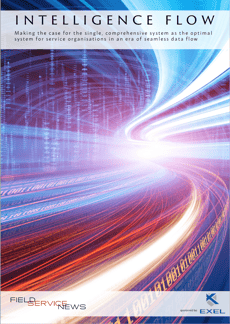
This feature is just one short excerpt from a recent white paper we published in partnership with Exel Computer Systems.
www.fieldservicenews.com subscribers can read the full white paper now by hitting the button below.
If you are yet to subscribe you can do so for free by hitting the button and registering for our complimentary subscription tier FSN Standard on a dedicated page that provides you instant access to this white paper PLUS you will also be able to access our monthly selection of premium resources as soo as you are registered.

Data usage note: By accessing this content you consent to the contact details submitted when you registered as a subscriber to fieldservicenews.com to be shared with the listed sponsor of this premium content Exel Computer Systems who may contact you for legitimate business reasons to discuss the content of this white paper, as per the terms and conditions of your subscription agreement which you opted into in line with GDPR regulations and is an ongoing condition of subscription.
As we have seen in the paper so far, there are a lot of benefits to the platform approach. However, there is one significant draw that can cause hesitancy in many companies – relying on one provider.
In the concluding part of this paper, we shall take a look at consideration for ensuring the platform you select is one you can have faith in...
Reliance on a single solution provider is, of course, the natural counterbalance of having one platform and one provider being integral to so many mission critical aspects of your business. For every company, the
decision as to whether the risk/reward ratio of taking the platform approach is suitable may be different.
However, having provided a small outline of just some of the benefits of the platform approach, in this concluding section of this paper we shall outline some of the key considerations that could help you mitigate risk on the other side of the equation.
When considering any platform provider you should consider the following:
WHAT IS THEIR TRACK RECORD OF WORKING WITH ORGANISATIONS LIKE MINE?
This should always be the starting point – how well will this company genuinely understand our needs? However, this doesn’t necessarily mean that you should be looking at a solution provider that only serves your particular industry vertical, or even one that caters to companies of similar size, be it enterprise or SMB.
One of the most consistent themes within Field Service News discussion groups is that so many of the pain points of field service operations are shared across vertical industries. Yet, the insight from outside your vertical sector can often help reflect on a problem – and show ways to overcome it from a new perspective.
Similarly, there are learnings from smaller, more nimble organisations that can help larger companies; and best practices of the enterprise that SMBs can adopt to improve efficiencies.
The solution provider who has that broad experience across different industry verticals, with clients of all sizes that can demonstrate that they not only understand the challenges you face but also that they have helped companies with similar needs, will be worth their weight in gold when it comes to not only improving your workflow but, perhaps most importantly, guiding you to avoid the common pitfalls you might otherwise have faced.
DO THEY HAVE A SOLID FINANCIAL POSITION?
This next consideration is essential for two key reasons. The first and perhaps more prominent of the two is that the last thing you want is to implement a solution across your business only for the provider to cease trading a year or two down the line, leaving you with what will quickly become an outdated legacy product that ultimately will cause more harm than good.
So the first key is to assess the long-term financial health of the business. Generally, if a solution provider is financially robust, this will be woven into their sales pitch at some level, but never be afraid to ask. Additionally, a look through their current customer roster can be a strong indicator of business strength. Many companies using the product, including some with strong brand recognition, can often be another indicator of a healthy and profitable business.
However, the second reason this is a crucial consideration is probably even more critical. A solid and healthy balance sheet allows for consistent investment into research and development.
For example, Exel Computer Systems solutions are under continuous development and have been since inception – the development never ends – one of the key reasons they have such strong loyalty within their customer base.
SHAPING THE FUTURE DEVELOPMENT ROADMAP
Another aspect for consideration that leads neatly on from this is understanding how responsive the solution provider is to customer input in terms of future developments?
This is an area where perhaps you may be better served by selecting a platform provider that is more accessible than the behemoths of the tech industry that may be the more appealing at first glance.
Does the solution provider host regular user groups? Is there a mechanism for feature requests? What is the success of such programs?
These are all questions that can indicate how responsive the platform provider may be to working with you to enhance further and refine the solution, or even introduce new modules to the platform entirely.
IS THE PLATFORM MODULAR?
This brings us to our final point for consideration – does the platform have a modular structure?
As we mentioned at the top of this section, there are many shared pain points across the field service sector. However, every business remains unique, and every company will have different needs.
Introducing new modules as additional requirements arise can allow a platform to offer the easy data flow we discussed in the first section of this paper, yet provide the flexibility that we often see as a highly celebrated benefit of a best- of-breed technology stack approach.
A modular-based platform also allows for more straightforward implementation. The old maxim that you can’t boil the ocean is especially true for mission-critical software implementation. The possibility of easing the implementation with a modular platform, particularly if deployed across multiple business units, allows for a much smoother transition.
"The old maxim that you can’t boil the ocean
is especially true for mission-critical software implementation..."

This feature is just one short excerpt from a recent white paper we published in partnership with Exel Computer Systems..
www.fieldservicenews.com subscribers can read the full white paper now by hitting the button below.
If you are yet to subscribe you can do so for free by hitting the button and registering for our complimentary subscription tier FSN Standard on a dedicated page that provides you instant access to this white paper PLUS you will also be able to access our monthly selection of premium resources as soo as you are registered.
 Data usage note: By accessing this content you consent to the contact details submitted when you registered as a subscriber to fieldservicenews.com to be shared with the listed sponsor of this premium content Exel Computer Systems who may contact you for legitimate business reasons to discuss the content of this white paper, as per the terms and conditions of your subscription agreement which you opted into in line with GDPR regulations and is an ongoing condition of subscription.
Data usage note: By accessing this content you consent to the contact details submitted when you registered as a subscriber to fieldservicenews.com to be shared with the listed sponsor of this premium content Exel Computer Systems who may contact you for legitimate business reasons to discuss the content of this white paper, as per the terms and conditions of your subscription agreement which you opted into in line with GDPR regulations and is an ongoing condition of subscription.
Further Reading:
- Read more about Digital Transformation @ www.fieldservicenews.com/digital-transformation
- Read more about Data Management @ www.fieldservicenews.com/data-management
- Read more about Exel Computer Systems on Field Service News @ www.fieldservicenews.com/exel
- Learn more about Exel Computer Systems @ www.exel.co.uk
- Follow Exel Computer Systems on Twitter @ twitter.com/exelcomputersys
Nov 09, 2021 • Features • White Paper • Digital Transformation • Exel Computer Systems • Data Management
In the second feature from a recent white paper we published in partnership with Exel, we outline how an API works and why service organisations should invest in a series of best-of-breed solutions and combine them all in a technology stack.
In the second feature from a recent white paper we published in partnership with Exel, we outline how an API works and why service organisations should invest in a series of best-of-breed solutions and combine them all in a technology stack.

This feature is just one short excerpt from a recent white paper we published in partnership with Exel Computer Systems.
www.fieldservicenews.com subscribers can read the full white paper now by hitting the button below.
If you are yet to subscribe you can do so for free by hitting the button and registering for our complimentary subscription tier FSN Standard on a dedicated page that provides you instant access to this white paper PLUS you will also be able to access our monthly selection of premium resources as soo as you are registered.

Data usage note: By accessing this content you consent to the contact details submitted when you registered as a subscriber to fieldservicenews.com to be shared with the listed sponsor of this premium content Exel Computer Systems who may contact you for legitimate business reasons to discuss the content of this white paper, as per the terms and conditions of your subscription agreement which you opted into in line with GDPR regulations and is an ongoing condition of subscription.
In the previous feature from this white paper, we looked at how the easy flow of data across various modules within a platform can improve both the efficiency of your service delivery and ensure you are meeting your customers’ expectations. However, in a world of APIs where everything is expected to work wonderfully and connect via plug and play, why shouldn’t a service organisation invest in a series of best-of-breed solutions and combine them all in a technology stack?
As a starting point, let us first take a moment to better understand what an API (Application Programming Interface) actually is. Indeed, API is an acronym often thrown into a conversation but perhaps not so well understood for those of us who are not software experts.
To outline how an API works, let us take a more straightforward example.
Imagine you’re a diner in a restaurant with a menu of choices to select from. The kitchen is the part of the ‘system’ that will prepare your meal. However, you cannot just go to the kitchen and place your order directly; this would slow the Chef down and delay service for you and everyone else in the restaurant.
The critical link required for you to communicate your order to the Chef and deliver your food to your table is a waiter.
At a very rudimentary level, the waiter is an API. They are the messenger that takes your request and informs the Chef of what is needed. Then when the Chef completes the task, the waiter returns to deliver the response (in this case, your meal) back to you.
So far, so good.
However, now let’s expand the analogy to fit better the many moving parts of a mission-critical activity, such as field service. In a best-of-breed technology stack, we are no longer dealing with one waiter; we are dealing with a waiter for each aspect of the meal. One Waiter to take our order for our appertisers, another for our entrée. We have a Concierge to ensure we are sat at an adequate table, a Sommelier to take our wine order, a Dessert Waiter and so forth.
Then each of these additional waiters will be linking back to a different part of the restaurant.
The Commis Chef will be responsible for delivering one part of the meal, the Sous Chef another, Chef de Partie another. The Bartender is responsible for providing drinks expertly recommended by the Sommelier, and working in an entirely different part of the building.
Anyone who has been to a high-end restaurant will know that such complexity can be managed and delivered effectively to drive a standard of service that is exceptional.
However, anyone who has worked in such a restaurant will tell you that it takes a phenomenal amount of work to keep the lines of communication and the flow of productivity moving across the shift. Indeed, this is why good restaurant managers that can keep all of these connections, these ‘human APIs’, working in unison, are worth their weight in gold.
"With a platform approach, the links between modules are within the architecture of the solution itself, updates would have been fully tested system- wide prior to deployment. Should an issue occur, you have one point of contact to seek swift resolution..."
However, for the field service organisation, whose function is to serve their customers, not manage a complex web of systems and technology, is this an optimum approach?
In a best-of-breed technology stack, a company becomes exposed to various elements, reliant on multiple APIs being aligned across numerous updates.
As with the restaurant example, managing this takes a lot of work. Any one of the elements the stack is comprised of could become a broken link the chain, having a knock-on effect across the stack. It has to be questioned whether such a complex solution is worth the risk.
For example, if the integration between two integral systems within your technology stack fails, to which of the two providers should you turn to resolve the issue?
With a platform approach, the links between modules are within the architecture of the solution itself, updates would have been fully tested system- wide prior to deployment. Should an issue occur, you have one point of contact to seek swift resolution. With a platform approach, a lot of the responsibility shifts onto your solution provider to make things work. Of course, this also means less heavy lifting required from your internal IT team.
With the technology stack, your IT team can spend all of their time making the multiple solutions talk to each other, bouncing from one solution provider to the next in an endless cycle of updates and new integrations.
This can be a drain on resources, both financially and in terms of man-hours, both of which could be better spent focusing on growing your business and keeping your customers happy.
As we saw in the previous section, the seamless flow of data across an organisation can be the difference between service failure or service excellence.
Do you really want to be exposed to multiple potential weak links in the chain, especially when the one platform approach overcomes this?

This feature is just one short excerpt from a recent white paper we published in partnership with Exel Computer Systems..
www.fieldservicenews.com subscribers can read the full white paper now by hitting the button below.
If you are yet to subscribe you can do so for free by hitting the button and registering for our complimentary subscription tier FSN Standard on a dedicated page that provides you instant access to this white paper PLUS you will also be able to access our monthly selection of premium resources as soo as you are registered.
 Data usage note: By accessing this content you consent to the contact details submitted when you registered as a subscriber to fieldservicenews.com to be shared with the listed sponsor of this premium content Exel Computer Systems who may contact you for legitimate business reasons to discuss the content of this white paper, as per the terms and conditions of your subscription agreement which you opted into in line with GDPR regulations and is an ongoing condition of subscription.
Data usage note: By accessing this content you consent to the contact details submitted when you registered as a subscriber to fieldservicenews.com to be shared with the listed sponsor of this premium content Exel Computer Systems who may contact you for legitimate business reasons to discuss the content of this white paper, as per the terms and conditions of your subscription agreement which you opted into in line with GDPR regulations and is an ongoing condition of subscription.
Further Reading:
- Read more about Digital Transformation @ www.fieldservicenews.com/digital-transformation
- Read more about Data Management @ www.fieldservicenews.com/data-management
- Read more about Exel Computer Systems on Field Service News @ www.fieldservicenews.com/exel
- Learn more about Exel Computer Systems @ www.exel.co.uk
- Follow Exel Computer Systems on Twitter @ twitter.com/exelcomputersys
Nov 02, 2021 • Features • White Paper • Digital Transformation • Exel Computer Systems • Data Management
In the first feature from a recent white paper we published in partnership with Exel, we look at some of the critical components within such platforms and outline how the flow of data from each component is vital for modern service delivery.
In the first feature from a recent white paper we published in partnership with Exel, we look at some of the critical components within such platforms and outline how the flow of data from each component is vital for modern service delivery.

This feature is just one short excerpt from a recent white paper we published in partnership with Exel Computer Systems.
www.fieldservicenews.com subscribers can read the full white paper now by hitting the button below.
If you are yet to subscribe you can do so for free by hitting the button and registering for our complimentary subscription tier FSN Standard on a dedicated page that provides you instant access to this white paper PLUS you will also be able to access our monthly selection of premium resources as soo as you are registered.

Data usage note: By accessing this content you consent to the contact details submitted when you registered as a subscriber to fieldservicenews.com to be shared with the listed sponsor of this premium content Exel Computer Systems who may contact you for legitimate business reasons to discuss the content of this white paper, as per the terms and conditions of your subscription agreement which you opted into in line with GDPR regulations and is an ongoing condition of subscription.
Platforms Are Key to Meeting the Demands of Modern Field Service
Across the last few years, we have seen a clear trend emerge amongst field service organisations. In the past, service contracts were often seen as the additional ‘sweetener’ bundled in to help drive product sales.
Then within the last decade, we began to see field service no longer viewed as a necessary evil but more a critical strategic aspect in revenue generation.
Field service operations that had for so long been deemed as cost centres across the industry made the move en masse to becoming profit centres.
However, today, as service delivery continues to evolve into a critical strategic revenue generator for many organisations, particularly those within manufacturing verticals, the industry is moving beyond the initial concept of service as a revenue stream and into more and more detailed discussions around servitization, outcome-based service contracts and a significant focus on customer success.
At the heart of these ongoing developments is the realisation that the silos between different business units must be broken down, particularly in terms of data flow and information exchange, if the field service operation is to be able to be a core driver in business success.
Indeed, regardless of whether your organisation is merely seeking to maximise efficiencies across the service operation or is moving towards a fully servitized business model, the need for effective flow of information and data across the wider business has never been more apparent.
In this white paper, which FSN subscribers can access in full, we shall put forward the case as to why the all-in-one platform approach can be far more productive in achieving a more seamless transfer of data and intelligence and why this is critical for effective and robust decision making.
The Benefits of Data Moving Through the Platform and Beyond the Silos
From reducing the cash-to-service cycle to ensuring a complete overview of both the customer and asset history that can be easily accessed at every customer touchpoint, a platform approach can reduce friction within service delivery and ensure you are meeting the expectations of your customers at every turn. In this opening section we shall look at some of the critical components within such platforms and outline how the flow of data from each component is vital for modern service delivery.
CUSTOMER RELATIONSHIP MANAGEMENT:
At the heart of every modern platform empowering service organisations to place the customer at the centre of their business lies the Customer Relationship Management (CRM) system.
Modern CRM should be capable of capturing and managing all interactions with your customers and prospective customers. However, a stand-alone application often lacks easy access to other crucial systems that provide essential, yet often nuanced information that could be the difference between retaining a customer through excellent service and losing a customer through a disjointed service experience.
The point of service is often when the customer needs you the most. It is when they are seeking solutions to an issue with the product you provide. Often in a business-to-business environment, the failure of one asset could quickly amount to hundreds of thousands of pounds in lost production capacity. This is the point where the service you deliver defines your organisation.
"When field service providers can retain customers and renew contracts, they can spend less time worrying about how to win new business simply to make up for customers they’ve lost. It becomes much easier to grow the business"
Customer touchpoints, be it a representative in the contact centre or an engineer in the field, need to be able to access all of the pertinent information to hand quickly and efficiently. The flow of data into the CRM is vital to empower them to control the situation and keep your customer at ease, knowing the issue is being handled effectively.
Modern platforms, such as EFACS (an Enterprise Resource Planning or ERP system) and Eagle Field Service (a Field Service Management or FSM system) provided by Exel Computer Systems, are designed to reduce system interaction required to access such critical information by allowing interrogation of other parts of the system via drill-throughs, reducing navigation through system menus.
As well as being vital during initial issue resolution, this can also become exceptionally valuable with follow-up connections, allowing users to gain insight into effective marketing campaigns, customer satisfaction and identify potential up-selling/cross-selling opportunities.
FINANCIAL TOOLS:
The biggest challenge for many service organisations, from the small to large, is often the delay in large cash-to-service cycles, currently, as we look forwards to a continuing uncertain economic outlook, cash-flow promises to be an ongoing challenge for all organisations.
This is another vital area where the platform can shine for service organisations.
Modern platforms should incorporate accounting modules that ensure accurate, real-time, cohesive financial management for your business. Such modules should be easy to use and provide high functionality and flexibility.
From a service delivery perspective, in-platform workflow automation can allow business procedures, such as producing invoices upon receipt of digital signature, to vastly increase operational efficiency. At the same time, automated follow-ups can ensure the prompt payment of invoices – again helping to reduce cash-flow challenges.
Similarly, the most significant cause of revenue leakage often relates to service provided outside of warranty not being invoiced correctly. By having a flow of data easily accessible by all users across the platform, this can be negated, ensuring out of contract service is charged appropriately and up-selling opportunities are realised.
SCHEDULING AND CASE MANAGEMENT:
When it comes to scheduling service engineers, again, having complete visibility of the various customer interactions and asset information is vital for effective management of the service cycle.
The ability to manage and schedule all planned maintenance requirements for the entire duration of the contract is a necessity. Having visibility into this can be crucial for the field service operations and other business units, including sales, marketing, and even research and development.
However, while the ideal is to move towards planned maintenance as much as possible, all service companies will still face reactive service calls. The capacity planning to allow for reactive calls is an essential element within an FSM solution. Ensuring this visibility in workforce management tools is another important aspect of the broader platform approach.
The connected platform allows dispatch agents to select the right engineer the first time, every time; if the platform offers an assisted scheduling tool.
Such tools allow users to schedule and manage calls, constantly monitor engineers’ diaries (updated by the mobile solution to reflect real-time changes) and have the ability to view optimum time slots and spare availability.
Similarly, Call Centre functionality is core to any business that needs to monitor and control after-sales service to their customers. Cases may be categorised and assigned a priority or service level. All correspondence and activities related to the case can be tracked, photos and records of problems can be stored, and correspondence relating to technical issues maintained.
Of course, each of these elements is an essential tool within their own right, in terms of ensuring efficient service delivery and driving customer satisfaction. However, the seamless data flow across these different aspects of the all-in-one solution allows a service organisation to truly deliver a holistic and connected service experience for the customer.
These are, of course, just a small selection of the tools that make up the average field service system. Many other elements may be included within such a platform, but similarly, best of breed alternatives may be available as stand-alone solutions. In the next part of this paper, we shall explore why adopting multiple best-of-breed solutions can be more challenging than a single platform.

This feature is just one short excerpt from a recent white paper we published in partnership with Exel Computer Systems..
www.fieldservicenews.com subscribers can read the full white paper now by hitting the button below.
If you are yet to subscribe you can do so for free by hitting the button and registering for our complimentary subscription tier FSN Standard on a dedicated page that provides you instant access to this white paper PLUS you will also be able to access our monthly selection of premium resources as soo as you are registered.
 Data usage note: By accessing this content you consent to the contact details submitted when you registered as a subscriber to fieldservicenews.com to be shared with the listed sponsor of this premium content Exel Computer Systems who may contact you for legitimate business reasons to discuss the content of this white paper, as per the terms and conditions of your subscription agreement which you opted into in line with GDPR regulations and is an ongoing condition of subscription.
Data usage note: By accessing this content you consent to the contact details submitted when you registered as a subscriber to fieldservicenews.com to be shared with the listed sponsor of this premium content Exel Computer Systems who may contact you for legitimate business reasons to discuss the content of this white paper, as per the terms and conditions of your subscription agreement which you opted into in line with GDPR regulations and is an ongoing condition of subscription.
Further Reading:
- Read more about Digital Transformation @ www.fieldservicenews.com/digital-transformation
- Read more about Data Management @ www.fieldservicenews.com/data-management
- Read more about Exel Computer Systems on Field Service News @ www.fieldservicenews.com/exel
- Learn more about Exel Computer Systems @ www.exel.co.uk
- Follow Exel Computer Systems on Twitter @ twitter.com/exelcomputersys
Dec 14, 2020 • Features • Digital Transformation • Internet of Things • Data Management • Covid-19 • Teodora Gaici
Modern professionals have done commendable work of implementing Internet of Things (IoT) devices within their company. But many IoT deployments swiftly hit a stumbling block due to the lack of information ownership and enterprise-wide data access.
Modern professionals have done commendable work of implementing Internet of Things (IoT) devices within their company. But many IoT deployments swiftly hit a stumbling block due to the lack of information ownership and enterprise-wide data access.
In a world battered by the COVID-19 outbreak, IoT is expeditiously modernizing data management initiatives.
The pandemic has drawn needed attention to the unintended consequences of pursuing business continuity through fragmented and rigid IT infrastructures. Firms used to clutch at outdated IT assets—but today, they are viewing things in reverse. Despite their previously rosy assessments of legacy IT infrastructures, many companies are now positioning cutting-edge IoT systems as core enablers for ongoing operations. Research confirms this premise, outlining “the growing focus of organizations in reducing operational costs by incorporating advanced tools and techniques that assist in effectively managing the equipment.” The sector’s demand for customized industrial IoT solutions is also growing significantly.
This commitment to prioritize IoT innovation is inevitably igniting a transformation of industry standards and implicitly—data management. As any revolutionizing force, IoT is driving “a significant shift in the requirements for storing and managing data,” according to Gartner analysts—and it strengthens the move to potentially unknown territories, such as “non-relational forms of data persistence that enable high-speed and high-volume data.”
IoT IS EXPEDITIOUSLY MODERNIZING DATA MANAGEMENT INITIATIVES DURING THE PANDEMIC
The lack of IoT standardization prevents industry players from understanding newly emergent requirements for data. It’s often aging and highly inflexible IT system landscapes that hinder a firm’s connectivity needs and real-time data collection—but so is the absence of standardization across the IoT landscape. Beyond the sheer amount of information generated by smart devices, experts not only identify IoT data as being “inherently multi-dimensional and noisy by nature,” but also tremendously perishable. The collection of IoT data can’t, therefore, fit in a traditional database. But without specialized IoT standards, professionals may find it nearly impossible to recognize shifting data requirements.
Another probable reason for not achieving value from IoT deployments is the narrow grip firms currently have on as-built information ownership. As-built data, or in experts’ words, “the information related to the raw parts, materials, and processes to build a product,” is traditionally owned by service managers. More often than not, platform owners and service-providing departments have the right to manipulate the data they are storing; alternatively, they can share a limited amount of information with select users. IoT-related efforts, however, should not only converge on the same data sets; when all aspects of business are enriched with IoT data, the company-wide involvement of stakeholders also becomes crucial. As evidenced by Christian Renaud, Research Director at 451 Research:
“The best data strategies are co-created by stakeholders including the business, the IT department, and the operations team working together.”
This type of reasoning is not foreign to industry players. From finance to research and development to sales and supply chain management, all aspects of business can capitalize on data—but if only a fraction of data is accessed, exchanged, and used wisely, IoT efforts will meet with varying degrees of success.
Many IoT-related impediments are commonly rooted in the restricted ownership of information and the lack of company-wide data access. Therefore, much of the conversation about IoT innovation centers on a fundamental question: Can professionals become custodians of data to patently facilitate the spread of information for greater stakeholder involvement?
There Is Mounting Pressure on Stakeholders To Be Looped In On the Firms IoT Efforts
Efficient data management is among the primary factors that create IoT value for stakeholders. Equally important to veritably meet stakeholder needs is—as argued by the NSW Government IoT Policy Guidance—seeking engagement. But before anything else, it’s essential to consider if the firm’s ”planned data uses [...] deliver value to the community [and provide] transparency and choice around what data is collected and how it will be used.”
As IoT programs aren’t a one-man performance, the IoT Policy Guidance broadly encourages industry players to consult with stakeholders while designing data requirements; one thing is to acknowledge the needs of each stakeholder, and another is to practically factor in their involvement.
An instructive example comes from Bright Wolf. Under the influence of company-wide IoT initiatives, this trusted provider of industrial IoT solutions recently developed Zero Waste Engineering™—a methodology that allows firms to:
- Validate the business case for a broad-gauge IoT strategy;
- Design plans that address the requirements of each stakeholder;
- Create an adaptable data processing system that communicates outcomes to stakeholders.
Another standard procedure for getting stakeholder involvement is to identify a Data Governance Champion—or more precisely, a senior leader that has the ability to “create a steering committee to establish policies [...] around data,” experts say.
Such methods facilitate the flow of data across the firm as they build potent data transmission links between departments while creating trusted networks and demonstrating value—which triggers the company-wide involvement of stakeholders.
To a certain extent, wide-ranging participation in IoT innovation demands revised organizational policies on data management; without an evolving data model that opens access to information, the business is siloed. Yet it’s not always the incapacity of a firm’s leadership to dissolve data barriers that hinders information sharing. Sometimes, permission to access data exists predominantly in pockets.
The Lack of Data Ownership Is Getting Renewed Attention
Having partial ownership of data cripples many efforts at unified IoT strategies—at a minimum, it contributes to the quick proliferation of misinformation across the firm.
It’s not uncommon for organizations to experience a lack of data owners. Remarkably enough, data can be under the exclusive control of the service-providing department (or platform owner)—even if it doesn’t necessarily own the given data.
Still and all, many organizations have managed to assign data owners for their assets—only to restrict enterprise-wide access in order to limit the exposure to security risks. Today, there is a solution to this problem: Blockchain of Things protects data ownership and privacy of end-users. “With proof of ownership and distributed data transactions,” a study reveals, “blockchain technology provides a natural channel for trade between data producers.”
Firms are essentially adjusting to data ownership issues by understanding that it doesn’t always matter who holds title to data; as specialists suggest, a better question to ask now is: “Who can access it?”.
Further Reading:
- Read more about Digital Transformation @ www.fieldservicenews.com/digital-transformation
- Learn more about Copperberg @ www.copperberg.com
- Read more about Data Management @ www.fieldservicenews.com/data-management
- Connect with Teodora Gaici on LinkedIn @ linkedin.com/teodoragaici
- Follow Copperberg on Twitter @ twitter.com/CopperbergAB
Nov 06, 2019 • Features • future of field service • Martin Summerhayes • data analysis • Data Management
As a sector we are drowning in data. Filtering it all down to something useful is growing more and more difficult. Here, Martin Summerhayes, outlines a strategy that will keep your head above the ones and zeros.
As a sector we are drowning in data. Filtering it all down to something useful is growing more and more difficult. Here, Martin Summerhayes, outlines a strategy that will keep your head above the ones and zeros.
Oct 31, 2019 • Features • Management • Data Analytics • Data Management • Huge Mizal
Let's make one thing clear: we won't tell you that data is the new oil because you probably heard enough about it. Surely, data is a valuable source for businesses, but manufacturing industries realize that data alone will not magically solve every...
Let's make one thing clear: we won't tell you that data is the new oil because you probably heard enough about it. Surely, data is a valuable source for businesses, but manufacturing industries realize that data alone will not magically solve every issue they might be having. Huge Mizal at Copperberg finds out more…












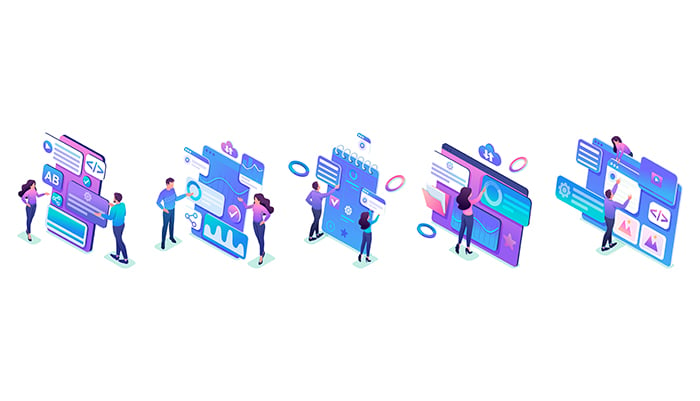







 Field Service News is published by 1927 Media Ltd, an independent publisher whose sole focus is on the field service sector. As such our entire resources are focused on helping drive the field service sector forwards and aiming to best serve our industry through honest, incisive and innovative media coverage of the global field service sector.
Field Service News is published by 1927 Media Ltd, an independent publisher whose sole focus is on the field service sector. As such our entire resources are focused on helping drive the field service sector forwards and aiming to best serve our industry through honest, incisive and innovative media coverage of the global field service sector.
Leave a Reply